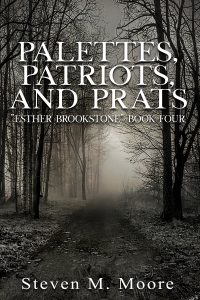Content editing or organic growth?
Happy Bastille Day to all my French readers! Vive la France!
***
When I started polishing my stories at the beginning of the third millennia (that sounds better than turn of the century), thinking about publishing them, I already had computers to help me. The internet was still in its infancy, but word publishing software wasn’t (in fact, MS Word was probably better then because it wasn’t so bloated).

There are three types of editing: content, copy, and proofing. Copy editing is the last thing you do before formatting, mostly spelling and grammar checking (I’ll admit MS Word’s new “Editor” does a better job of that now, although it still doesn’t like my hard-boiled, minimalist style). Proofing is the first thing you do after formatting and before publication.
In this post, though, I’ll focus on how I content edit. My method requires word processing software, and always has. It will sound chaotic, but it’s entirely logical.
I content edit as I go. My first draft is my last before copy editing. But “as I go” might be a bit confusing to some people. I get a manuscript (MS) going good, leave it for a bit, and create snippets of prose I add to it the next day. I might cut out a paragraph or an entire chapter, putting them elsewhere in the MS, or sticking them in an auxiliary file for possible future use…maybe with changes, maybe not, and maybe even in another story!
Perhaps I should call this creative chaos organic growth in a large sense, and not content editing? Planting, weeding, transplanting, pruning, etc. Growing up in California’s Central Valley, I could have become a farmer who does exactly that. As a writer, I’m that farmer who’s tending to a different crop, growing novels.

This is not a linear process! Some readers might think I just sit down and write until I have a first draft. That’s not how I write. (I wonder if anyone writes that way.) I might even write the ending several times—nothing wrong with that because Beethoven did it with his Fifth Symphony—each of my endings requiring more content editing, and each one possibly done before the novel is finished.
While I often discuss storytelling in terms of bards of yore spinning their yarns beside some prehistoric campfires, I couldn’t do that. They were the better storytellers, I suppose, at least in using a completely linear process (although they often repeated the same stories again and again, I suspect, embellishing sometimes, which is content editing).
I find this writing technique effective and efficient, even though it might seem to other writers and readers to be chaotic. It allows me to return to a story days or weeks later, or keep two or more MSs going at the same time. How do I keep the stories straight? Simple. They’re there in the computer with all the related noted, patiently waiting for further additions…and content editing.
Now you know how I produce all those novels…and are probably thinking that it’s better to have the final polished product in hand!
***

Comments are always welcome.
“Esther Brookstone Art Detective.” Up for some binge-reading? Here’s a series that should delight all US and UK readers! It starts with ex-MI6 spy Esther Brookstone as an inspector in Scotland Yard’s Art and Antiques Unit. Her paramour and Interpol agent Bastiann van Coevorden accompanies her on many adventures, eventually becoming Esther’s fourth husband. He tries to control her obsessive desire to fight crime and bring criminals to justice, keeping her focused and out of trouble, but she’s an active and headstrong woman. Wags in the yard have nicknamed Esther Miss Marple and Bastiann Hercule Poirot, but they’re 21st century sleuths who are more than a match for today’s criminal elements. Available wherever quality ebooks are sold, including the new Book Five.
. Around the world and to the stars!
